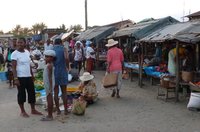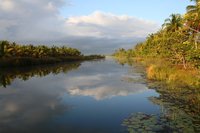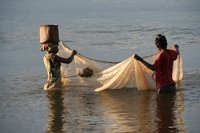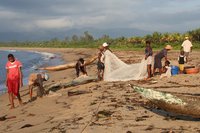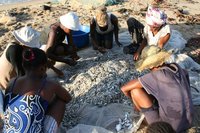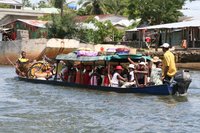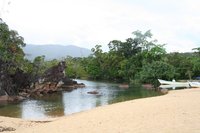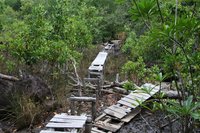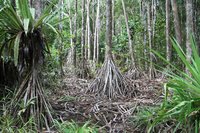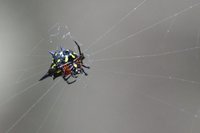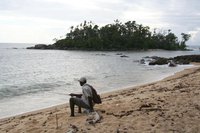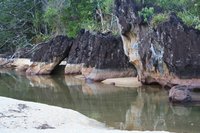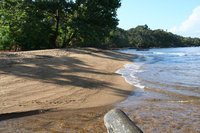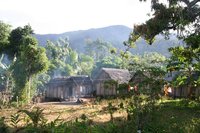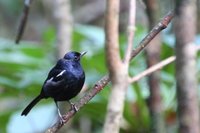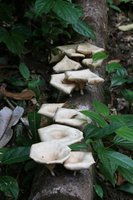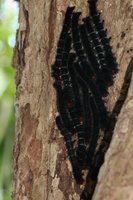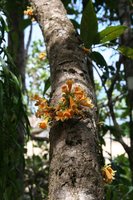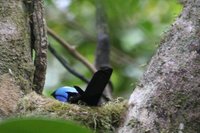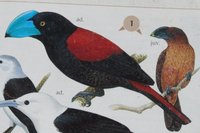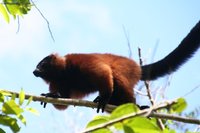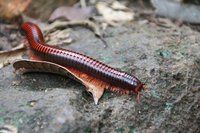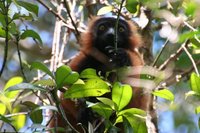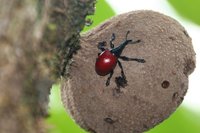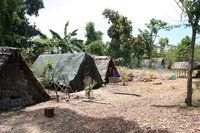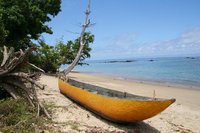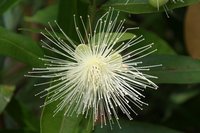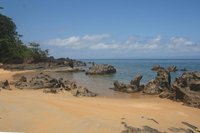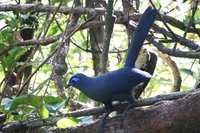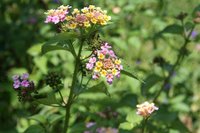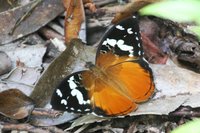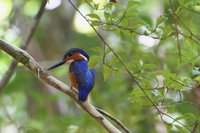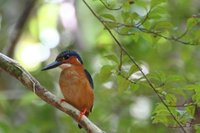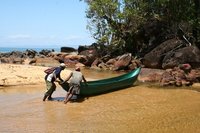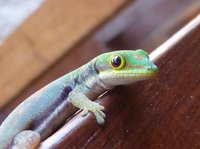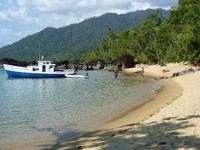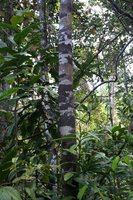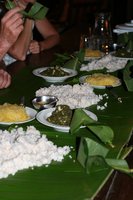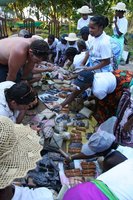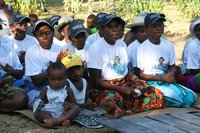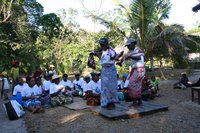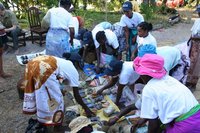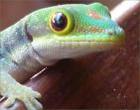 |
 |
 |
Maroantsetra Maroantsetra is a 1hour 15 minute flight from Tana. Due to our international flight problems we arrived in Maroantsetra late afternoon with no local currency and minus my suitcase. Monique, the owner of the Relais du Masoala Hotel, was amazing! She took me shopping to the stalls that lined the main single street of the village to buy some clothes and essentials - with only 30 minutes shopping time she still insisted that the stall keepers would not overcharge me, because we were tourists. Monique changed some Euros into Ariary and also gave me a hairbrush and swimming costume (for use at Masoala Forest Lodge, our next destination). Monique helped to ease an otherwise, distressing situation which made the start of our holiday so much better. I can't praise Monique enough and it's this type of care and service for customers that makes her lodge stand out from all others. We stayed for one night and it was most comfortable, with an excellent dinner. Masoala National Park
In the morning we were transported by speed boat to the Masoala Forest Lodge – there are no roads so the alternative is a 2 day trek!. Unfortunately, there was a miscommunication with the local tour operator and the lodge resulting in us missing our half day on Mangabe Island en route to Masoala Forest Lodge. Masoala National Park, reputedly the best
wildlife park in Madagascar, comprises some
230,000ha of largely primary forest on the
western side of the Masaola peninsula which
has the largest remaining area of coastal
/ lowland rainforest on Madagascar –
it’s one of the few places left where
tropical rainforest extends right down to
the sea. Masoala, which is the wettest part
of the country with many clear, fast flowing
streams and small rivers has arguably the
greatest biodiversity in Madagascar. - red-ruffed
lemur, white-fronted brown lemur, eastern
woolly lemur, eastern fork-marked lemur and
aye-aye amongst other species. Helmet and
nuthatch vangars are regularly seen along
with red-breasted coua, scaly ground roller,
short-legged ground roller and velvet asity.
The park is home to the greater hedgehog
tenrec, the fossa, the fanaloka, the falanouc,
various species of brightly coloured Mantella
frogs, and chameleons of all sizes. Masoala
is also the refuge of the endangered Madagascar
red owl and Madagascar serpent eagle, along
with many, many endemic bird species. Whales
also visit Antongil Bay around the breeding
season in the austral winter and spring.
The flora includes the Masoala pitcher plant
and the very rare ravimbe palm (Marojejya
darianii, listed by the International Union
for the Conservation of Nature as one of
the 12 most endangered living organisms in
the world). Coral reefs teeming with life
are protected in three adjacent marine parks.
The peninsula has many beautiful deserted
sandy beaches. The name of the park derives from Masoala
Cape at the tip of the peninsula, where navigating
the treacherous straits requires good visibility
("maso" means eye and "oala"
means haven or safe passage in the local
Betsimisaraka vernacular). The Mangabe island rainforest was set aside as a Special Reserve
in the early 60's, in part to protect
the fascinating nocturnal rare aye-aye which
had been introduced there. This is the best
place in which to see the black and white
ruffed lemur, as well as the white-fronted
brown lemur. The rainforest which covers
Nosy Mangabe also shelters, among others,
the cryptic fringed Uroplatus gecko, the
largest of the 10 species in this endemic
genus. Some look like dead leaves, some mimic
bark, and this remarkable ability to literally
fade into the woodwork makes them a particular
delight to spot. | |||||||||||||||||||||||||||||||||||||||||||














